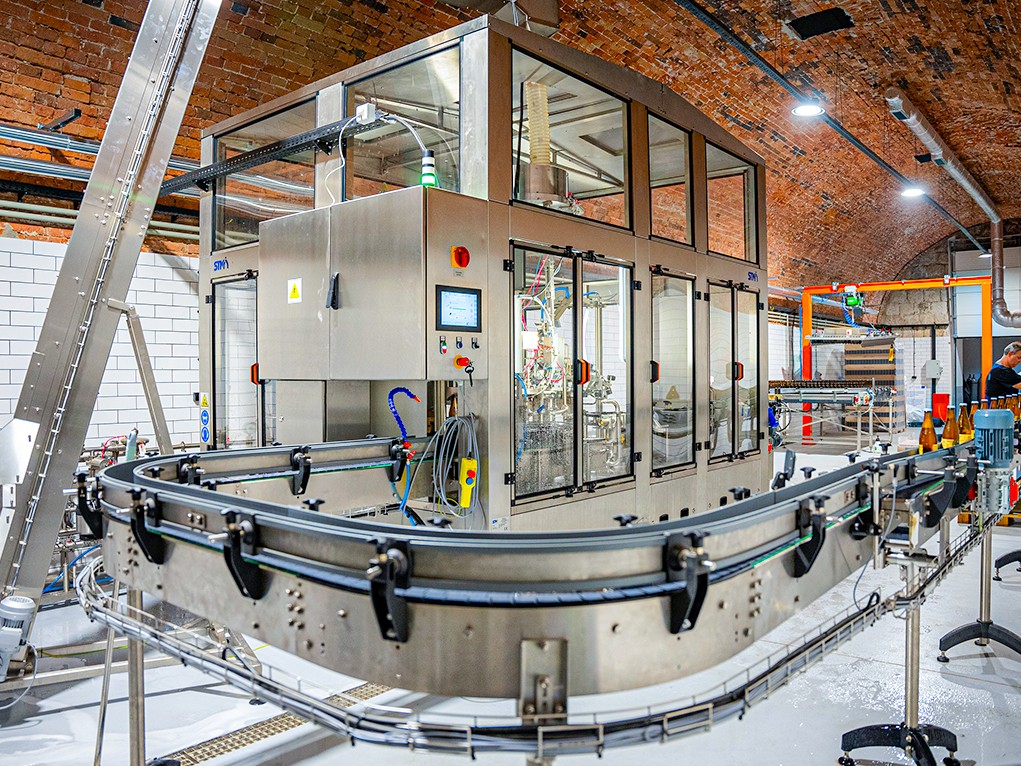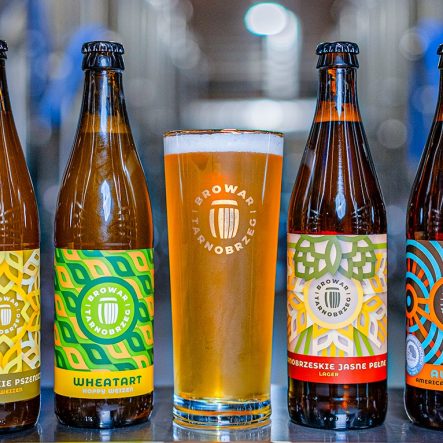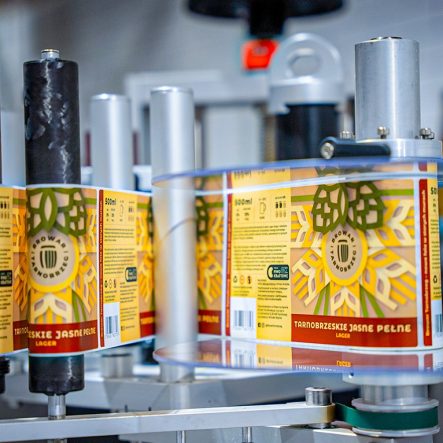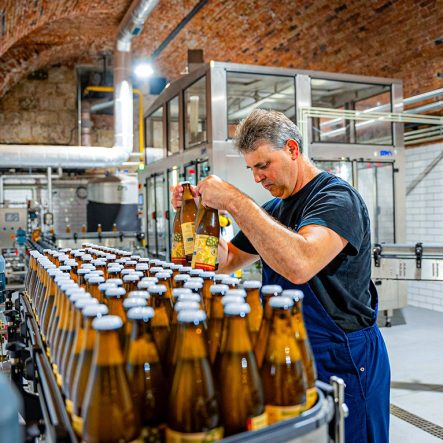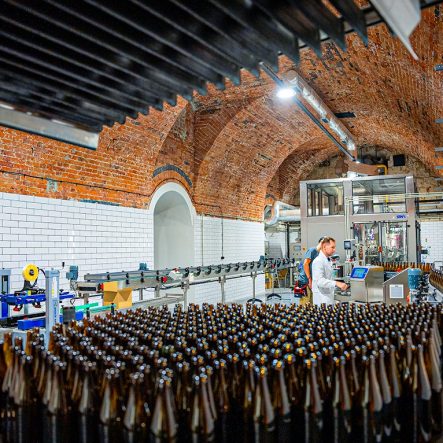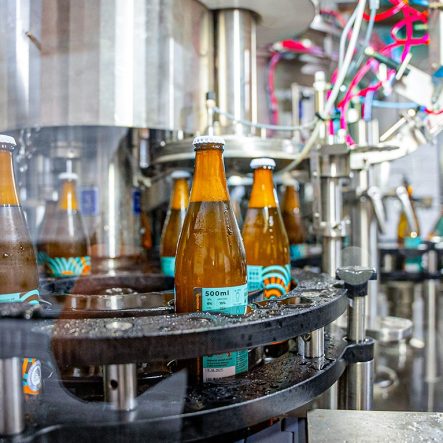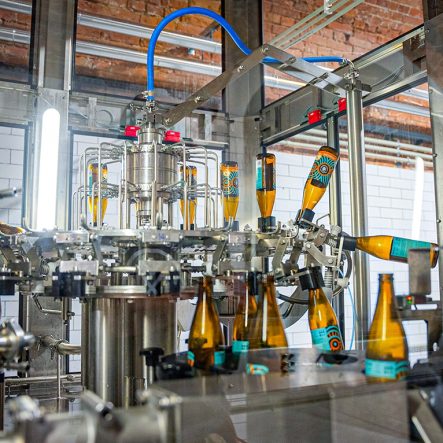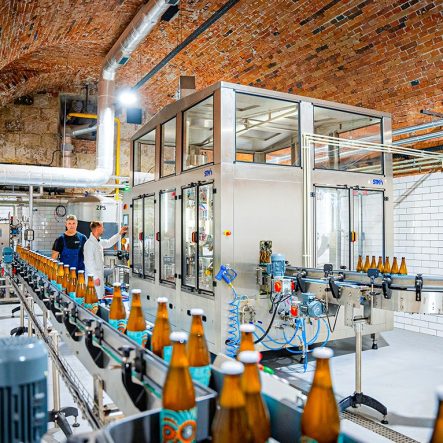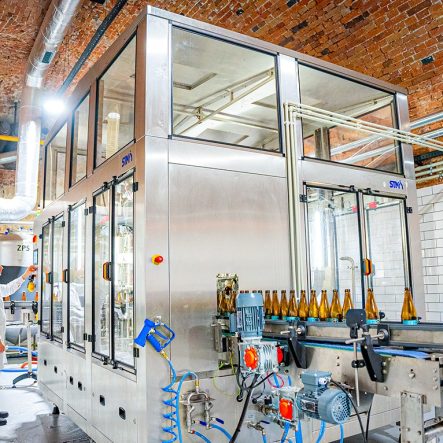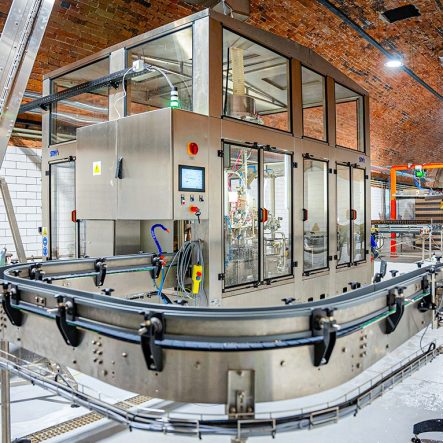The holiday period is a good time to present the new bottling line with a capacity of 4,200 bottles per hour realised for the Tarnobrzeg Brewery. It all started in 2017, when three young entrepreneurs: Michał Wójcik, Rafał Ruszkiewicz and Kamil Burdzy, with a huge dose of passion, dreams and determination together opened a craft brewery.
Tarnobrzeg Brewery is the first new-wave brewery in Poland, rebuilt in the premises of the old Tarnobrzeg brewery, which operated for 120 years until its closure in 1979. The passion, talent and commitment of the founders contributed to the reactivation of beer production in a new, refreshed form in line with the philosophy of boiling beer with natural methods from the best ingredients. The walls of the old brewery have experienced many modifications and changes in the concept of their use over the years. Currently, the front part of the building is occupied by Stary Browar Restaurant and Hotel, while the beer production of Tarnobrzeg Brewery has been located on the Vistula River side, in rooms located in the underground part of the complex.
The first beers that went into fermentation tanks were STARTAP (Polish Pale Ale), AWATAR (American IPA) and SANTAROSA (Wheat Beer with Rose Petals). To this day, AWATAR and SANTAROSA, along with TARNOBRZESKI JASNY PEŁNY, are the most frequently selected beers by the brewery’s customers. Currently, Brewery Tarnobrzeg’s beers are available in more than 30 locations across Poland.
Between 2022 and 2023, the Brewery underwent a major technological upgrade, thanks to which production capacity was significantly increased, which currently amounts to approximately 20,000 hectolitres per year. The modernisation included the installation of a new 30 hl automatic brewhouse, 32 fermentation tanks with a total capacity of 1,260 hl, a beer centrifuge, a water deoxygenator, a vacuum dealcoholiser and a bottling line with a capacity of up to 4,200 bottles per hour.
The beers of the Tarnobrzeg Brewery are packaged on the STM GROUP line, which consists of Triblock 16/16/4 ISO EPV BEER, Semi-Automatic Depalletizera, Self-Adhesive Labeller UNO ADE PRO, Data Printer, Flat Conveyors XPP, Infeed table for empty bottles, Collection Table for finished product. The whole system allows for the production of the highest quality beers at a volume of 20,000 hectolitres per year and places the Tarnobrzeg Brewery among the leaders of Polish craft breweries in terms of modern technology and production capabilities.
Cooperation with breweries is definitely an important part of our company’s activities; we are passionate about beer and know how to bottle it. This is why we can boast 22 successful realisations in the beer industry over the past few years. A good example of a machine dedicated to breweries is the STM Arrow Can EPV 14/2 with a nominal capacity of 6,000 cans per hour of 500ml. The machine is equipped with 14 mechanical isobaric pourers, whose opening and closing is operated by a system of electronically controlled pneumatic cylinders. The operator can manage parameters such as the time and frequency of post-drip venting, the length of time the can is blown, and the timing of opening and closing of the nozzle – a major advantage when filling carbonated beverages and oxidation-sensitive products such as beer. The filling machine is also equipped with equipped with a dissolved oxygen product meter, a carbon dioxide modulating valve unit, a beverage proportional valve, pressure and temperature sensors or one of the best product pumps available on the market.
We are a member of the EHEDG (European Hygienic Engineering & Design Group) which obliges us to apply the world’s strictest guidelines and rules when designing bottling machines. On the other hand, our long-standing passion for beer has taught us what to do in order to ensure that our machines have a record-low oxygen build-up during the bottling of this product, affecting the TPO (Total Packed Oxygen) and this very parameter determines the preservation of sensory qualities over the long shelf-life axis.

